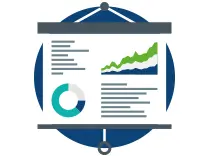
In our digital economy, the thought of going to a broker for your home or car insurance seems quaint. Instead you search a price comparison site to find the best deal, or just buy direct.
Whether it’s Google or Go Compare, there is still an intermediate involved, just a digital one. And while this kind of digital disintermediation has happened in many consumer markets, it’s less prevalent in B2B markets.
Many of those sectors still use brokers, dealers and resellers to bring together end-users and the companies that manufacture or deliver products and services.
The danger for those intermediates is that they will increasingly lose out as former partners and suppliers leapfrog them to go direct, or new digital platforms do to them what price comparison sites did to Independent Financial Advisors.
Why customer relationships are more important than ever
Digital technologies enable customers to interact with companies in new ways which are faster, richer in information and more convenient. What’s more, customers used to instant interactions via social media and mobile apps now expect that sort of service from every company.
In the digital world, the company that makes it easiest for a customer to find a great deal and complete a purchase is more likely to win the business. And the company that provides great service and proactively adds value will keep that business – even if they are more expensive.
Owning more of the customer relationship
In many B2B sectors, a given product or service can be delivered by a chain of suppliers. Each company involved in the delivery of the product or service has a different relationship with the end-user and may be required to intervene at different times.
If you’re a broker or other intermediary, your relationship with customers usually begins and ends with the sales process and may only pick up again a few years later at contract renewal time.
To remain relevant and add value, intermediaries must have much closer, more direct relationships with their customers. They must also lower barriers to purchasing by making it easier, more convenient, or cheaper for customers to use an intermediary than go direct.
Make it easier to buy
Assuming they can get the attention of prospects, intermediates face two problems in completing sales:
- Getting the right information to customers so they can make an informed decision.
- Ensuring the purchase or onboarding process is smooth so that the sale goes through.
In the consumer world, price comparison websites have demonstrated that not only is it possible to take lots of information from different suppliers and display it in a coherent way that makes sense and allows direct comparisons to be made, but that suppliers will get on board and provide that information when it’s shown to be in their best interests to do so.
For an intermediary, having access to price and product information from more suppliers enables it to give more accurate, more useful, and of course faster quotes. The next step is to make this tool available for customers to use across multiple channels rather than keeping it for your own staff to use to produce quotes behind the scenes.
Adding value all the way
Once a customer decides to make a purchase, the process of gathering the information needed to finalise the contract and onboard the customer is left in the hands of the chosen supplier. This leaves one of the most important steps in the customer relationship in the hands of a third party.
Taking control of that process by implementing your own contract management system enables you to maximise the conversion rate of your potential customers, deepens the relationship with customers, and gives you more data on customers’ needs to craft the best solution for them.
Off-the-shelf CRM and case management software solutions can be purposed to track and manage customer applications from start to finish. Getting them to make API calls to suppliers’ systems to send or request information and get prices is routine these days.
The same CRM system could also be used to provide customer service throughout the term of the contract. Again, it only requires light integration via APIs with suppliers’ systems to get data on customers’ usage patterns, billing cycles, service issues, and so on.
The crucial point is to make everything as convenient and efficient as possible for the customer. Ideally, they would need to do almost nothing at all.











